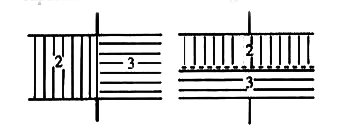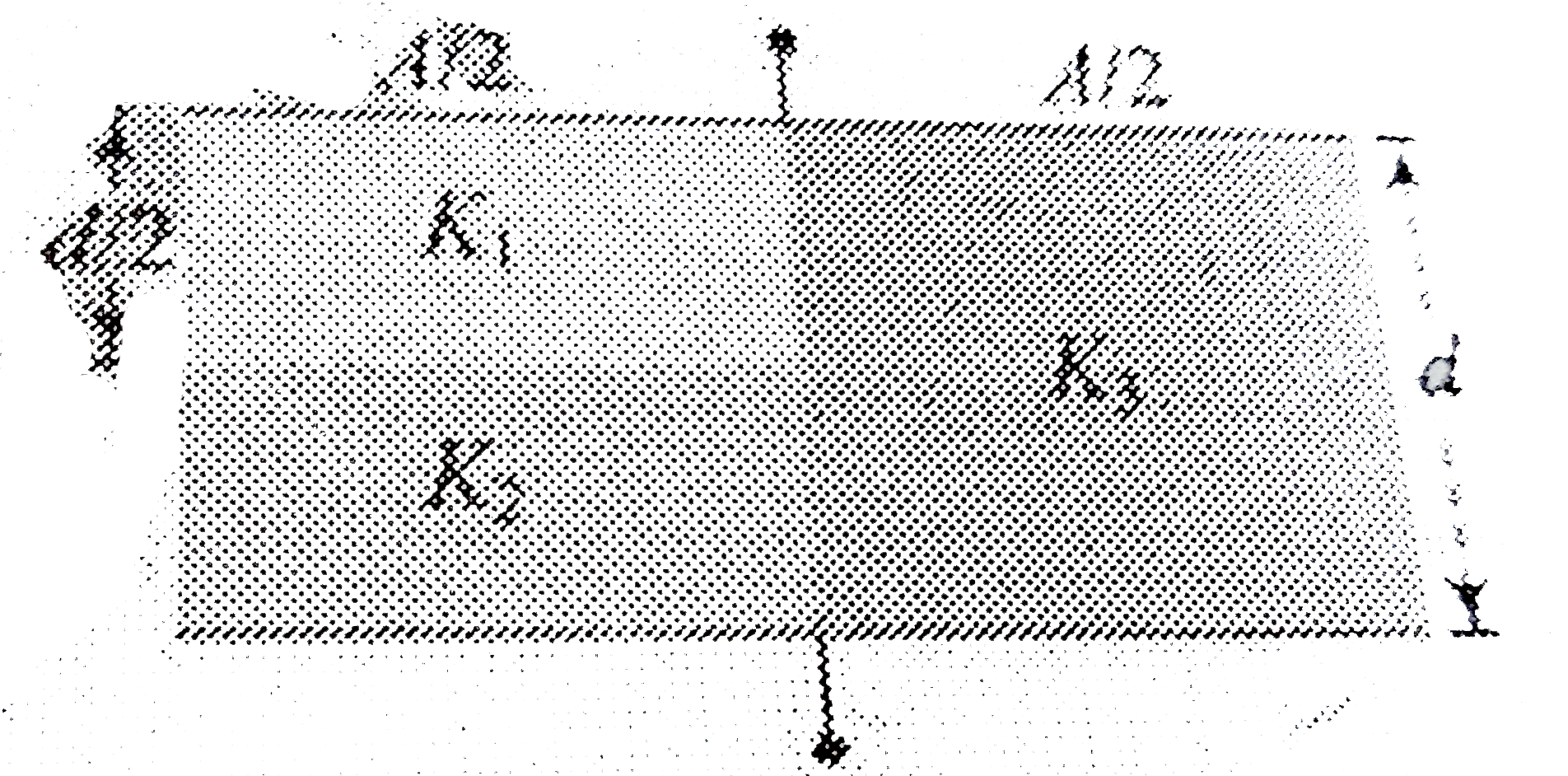In the figure a capacitor is filled with dielectrics. The resultant capacitance is

2ε0Ad[1k1+1k2+1k3]
ε0Ad[1k1+1k2+1k3]
2ε0Ad[k1+k2+k3]
None of these
The correct Answer is:D
C1=k1(A2)ε0d/2=k1Aε0d,C2=k2Aε0d
C3=k3Aε02d
Ceq=C3+C1×C2C1+C2=(k32+k1k2k1+k2)ε0Ad
keq=k32+k1k2k1+k2
Similar Questions
A capacitor is filled with two dielectrics of the same dimensions but of dielectric constants 2 and 3 as shown in figure (a) and in figure (b), the ratio of the capacitances in the two arrangements is

View SolutionIn the figure a capacitor is filled with dielectrics K_(1) , K_(2) and K_(3) . The resultant capacitance is
View SolutionIn the figure, a capacitor is field with dielectrics. The resultant capacitance is

View SolutionA parallel plate capacitor with air as the dielectric has capacitance C. A slab of dielectric constant K and having the same thickness as the separation between the plates is introduced so as to fill one-fourth of the capacitor. The new capacitance will be
View SolutionAir filled capacitor of capacitance 2μF is filled with three dielectric material of dielectric constant K1=4,K2=4 and K3=6 as shown in the figure . The new capacitance of the capacitor is
View SolutionA parallel plate capacitor of capacitance C (without dielectric) is filled by dielectric slabs as shown in figure. Then the new capacitance of the capacitor is

View SolutionA parallel plate capacitor with air as the dielectric has capacitance C. A slab of dielectric constant K and having the same thickness as the separation between plates is introduced so as to fill one-fourth of the capacitor as shown in the figure. The new capacitance will be :
View SolutionA parallel plate capacitor is filled with dielectrics. What is capacitance?
View Solution

